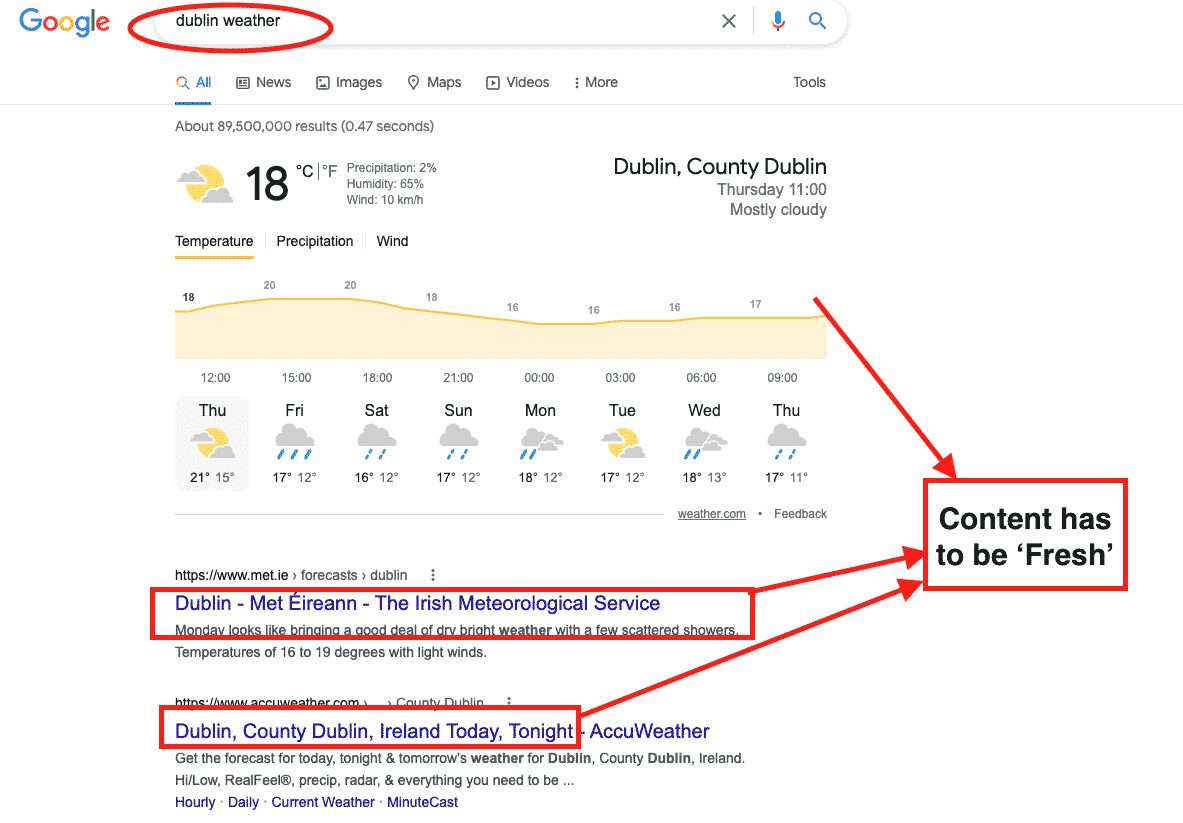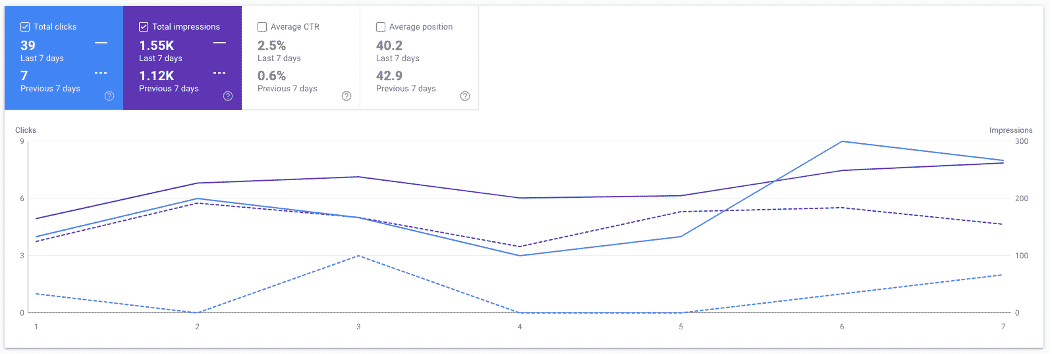Sometimes a simple tweak can make all the difference. In a recent SEO case-study, we showed how small edits to content can make a big impact in terms of overall organic performance.
In this post, we are going to look at one trick that you might use in certain situations; the date update.
Background – How fresh does my content need to be?
Often we hear Google likes shiny new content. And that is true to a certain extent but it’s also very contextual. Some search queries need responses that are time-relevant, like “winter fashion trends 2021” but many are not time-specific and relevant results can be “ever-green”.
For example, if you are looking up the weather – it’s likely that you want the weather today or in the near future. Therefore, Google is not going to show you something from years back. That query needs current results to be generated.

However..
On the other hand, if you Google say ‘how to change a lightbulb’ – you will see the top result is a video from 2006! Plus, many other blog posts in that particular serp (search engine results page) are not exactly recent. But critically, they are matching search intent and succinctly answering the query.

So it’s clear that “freshness” is contextual.
Now sometimes you will create a blog post that ranks well and generates traffic (visitors) to your site. Happy Days. Then one day, it begins to slip and you find it’s gone to page 2 or even further down into the oblivion of search results.
But before we diagnose what caused that, we need to understand the playing field. And what exactly is going on with the search results page.
Search Intent – A Building Block of SEO
To understand Search Intent ask yourself the following:
- What is Google rewarding for that search query (i.e. why is it prioritising some content in response to the search term, over others?)
- And what is the user really looking for when they search that query?
Try doing a relevant search for your products and services. Check out what is currently ranking and look at its attributes – content length, content type e.g. listicle articles (lists!), videos, homepage, service type pages, the page titles, descriptions etc.
Odds are, that if you had content that was ranking for a relevant keyterm (search), and is not as visible now – the content type probably just needs to be improved and freshened up as opposed to a complete re-write or starting again with new pages of content.
So a useful question to consider is ‘How can you make your page better to answer the search intent behind the search term(s)?’.
If you try thinking this way, it will help you to create more effective content and to update existing text so that Google considers it useful to searchers.
But what if your content is already great? And you know, it’s better (or at least just as good) than what’s currently ranking? Well, assuming other variables haven’t changed (page speed, backlink authority etc), what factors could cause a drop in search visiblity?
Check out the Dates on your Content
We had this exact same problem with a client recently. Floating between position 1 and 2 for nearly a year now, we had targeted 1 particular keyterm for a blog post that was bringing decent levels of traffic (site visitors) every week. Then we noticed late last month, a slip to page 2 and with that – a lot of the traffic dried up.
So first things first; we went to Google it ourselves. And interestingly, the top result had the date in it – from just a couple months back. And so did a couple of other results which were both newer than our post’s publication date.
So, rather than going back and updating the content (at least for now) we just simply changed the publication date.
The Result?
Within a week, it was back in position 2. (Jumping from 7 clicks a week to 39)
Easy.

So, if you have a post that has seemingly fallen from the skies of page 1, in some cases a simple change of publication date might just do the trick.
Other times and more often – it may require a content update. But if you have relevant strong content that isn’t time-specific, that’s appearing on the second page of search results, then you probably have a lot of potential to do some edits and see a striking increase in site traffic – by bridging from page 2 to page 1 in the results.
It’s for these kind of reasons that we periodically delve under the hood – and look at Google Analytics and Google Search Console to see what existing content we can bump up the rankings, with a little clever editing and date changing.
Content is an Investment
When you start looking at every piece of content you create as a long term investment and you focus on getting as much value out of that investment as you can; things begin to change. Your blog post is not an occasional ad hoc tactical event, it’s a strategic activity that will help you compete more effectively over the long-term.
So the answer isn’t always creating new content for the sake of it (although over the long-term that is typically a winning strategy too). The very best approach will include a combination of editing old content and creating new content resources too.
But in many cases, the low-hanging fruit will come from improving what you already have published. Or in this client’s case; spending a minute or two updating the publish date.
With SEO, the key is knowing what to do and when.
If you would like help with your SEO and improving your organic performance – please get in touch with us.


